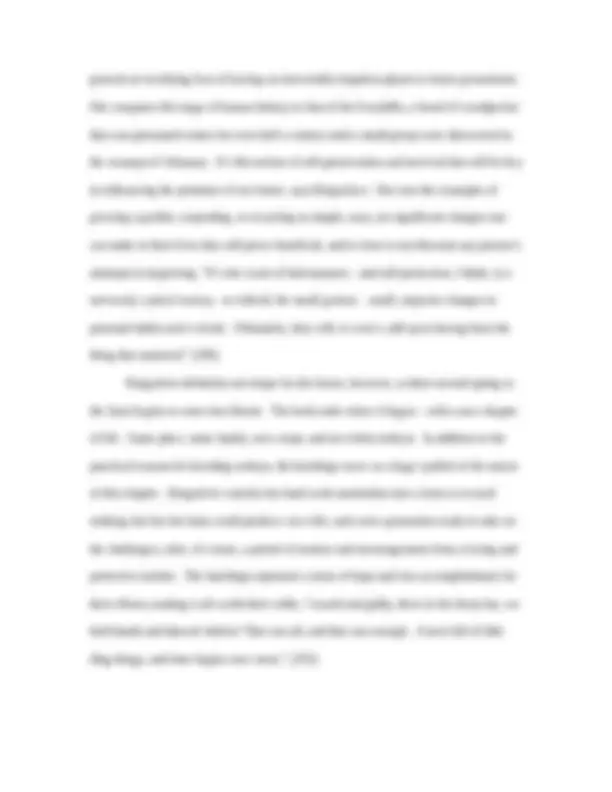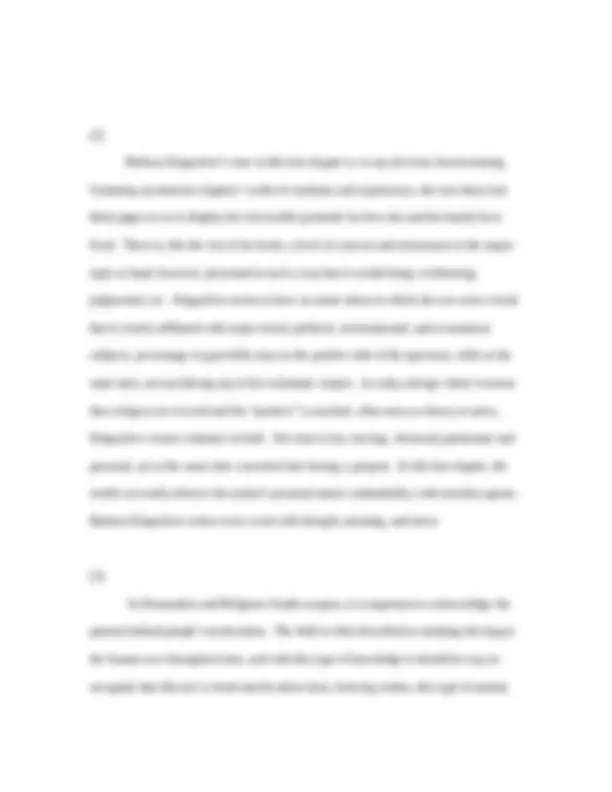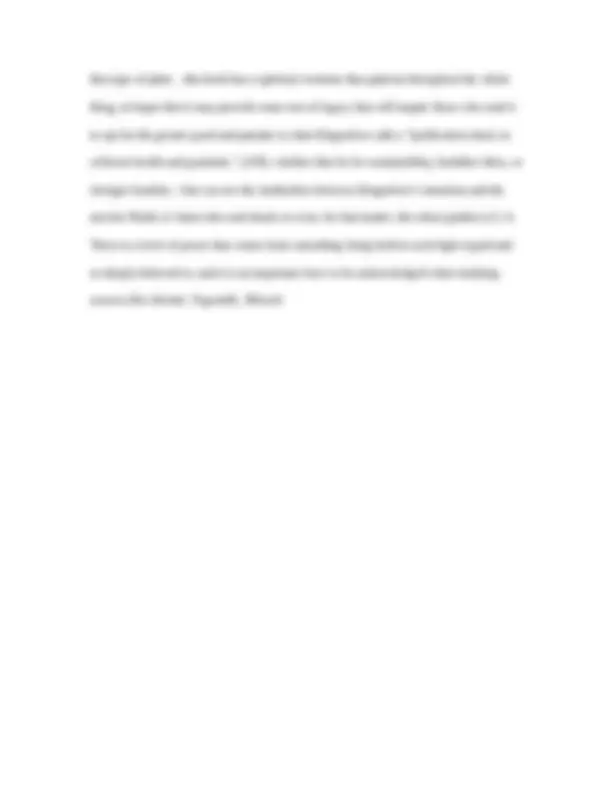





Study with the several resources on Docsity

Earn points by helping other students or get them with a premium plan


Prepare for your exams
Study with the several resources on Docsity

Earn points to download
Earn points by helping other students or get them with a premium plan
Community
Ask the community for help and clear up your study doubts
Discover the best universities in your country according to Docsity users
Free resources
Download our free guides on studying techniques, anxiety management strategies, and thesis advice from Docsity tutors
In the concluding chapter of barbara kingsolver's animal, vegetable, miracle, she and her family reflect on their year-long journey of surviving on homegrown and locally produced sustainable food. The experience evolved from a challenge into a way of life, inspiring them to provide their family with the healthiest and happiest memories. Kingsolver shares her triumphs and failures, and the development of the slow food movement during and after their experiment. Her heartwarming tone expresses her gratitude for the experience and her concerns for the future of our food culture and planet.
Typology: Study Guides, Projects, Research
1 / 5

This page cannot be seen from the preview
Don't miss anything!




Sasha Krongos HRS 190/ 12/11/ Word Count: Animal, Vegetable, Miracle: Ch. 20 (1) In Animal, Vegetable, Miracle ’s concluding chapter, Barbara Kingsolver and her family reflect upon the 365-day food journey that was soon marking its end. However, starting out as a promise to oneself and a challenge above all the rest, surviving on homegrown and locally produced sustainable food products eventually evolved into nothing more than everyday, normal life. How many different recipes can we create? How large of a dinner party can we throw? How many tomatoes is just the right amount to comfortably accommodate the demand until next spring? Is hard cheese really that tough to make? For Barbara Kingsolver, a once-attempt to merely survive off the basics of nature soon became a plan to flourish off of them; to provide her family with the healthiest, happiest, and best tasting memories of their lives, and in turn prepare her children to do the same for the next generation. In this last chapter, Kingsolver amusingly succumbs to her failures and lovingly acknowledges her triumphs as she reflects on the experiences of the prior year. Never attempting homemade apple cider or vinegar, for instance, are among the family’s top disappointments at the dinner table, while their major triumph is found in their desire to continue this alternative lifestyle, long after the 365 day period comes to a close.
“During my family’s year of conscious food choices, the most important things we’d learned were all about that: the wanting to. Our fretful minds had started us on a project of abstinence from industrial food, but we finished it with our hearts. We were not counting down the days until the end, because we didn’t want to go back,” (338). In fact, Kingsolver explains that the date in which marked the end of the experiment into what could be considered full food-freedom went hardly noticed by any members of the family. Their mentality had changed, right down to the kids; it had become a natural way of life. The Kingsolver’s weren’t the only ones to observe this change, either. During this year and after, Kingsolver observed the development of a slow food movement in the mainstream. Farmer’s markets began to popularize across the nation, local and national newspapers were more frequently spotlighting local-food awareness articles, and locavore restaurants began popping up where least expected. Kingsolver jokes, “what a shock, we were trendy,” (337) as she and her family found themselves inadvertently a part of a national community, supplying pressure and opposition on the industrial food market. Although the movement is still in it’s early phases, Kingsolver believes the punches are strong, and will only continue to grow with numbers. To Kingsolver, living off of the concept of local and sustainable food became not about making a grand public statement, but rather inspiring individuals to take any positive step towards making ours a better food culture and a healthier planet. She reveals her fears concerning the world we live in: the excessive use and waste of non- renewable resources, global warming, the total end of the family farm and ultimate monopolization of unhealthy, destructive industrial food conglomerates, and the overall
Barbara Kingsolver’s tone in this last chapter is, to say the least, heartwarming. Summing up nineteen chapters’ worth of emotions and experiences, she uses these last thirty pages or so to display her irrevocable gratitude for how she and her family have lived. There is, like the rest of her book, a level of concern and seriousness to the major topic at hand, however, presented in such a way that it avoids being overbearing, judgmental, etc. Kingsolver seems to have an astute talent in which she can write a book that is clearly affiliated with major social, political, environmental, and economical subjects, yet manage to gracefully stay on the positive side of the spectrum, while at the same time, not sacrificing any of her scholastic respect. In a day and age where it seems that critiques are revered and the “positive” is mocked, often seen as cheesy or naïve, Kingsolver creates a balance in both. Her tone is fun, moving, obviously passionate and personal, yet at the same time converted into having a purpose. In this last chapter, the reader can really observe the author’s personal nature unabashedly; with triviality sparse, Barbara Kingsolver writes every word with thought, meaning, and strive. (3) As Humanities and Religious Studies majors, it is important to acknowledge the passion behind people’s motivations. The field is often described as studying the legacy the human race throughout time, and with this type of knowledge it should be easy to recognize that this isn’t a book merely about facts, farm log entries, this type of animal,
that type of plant…this book has a spiritual overtone that patterns throughout the whole thing, in hopes that it may provide some sort of legacy that will inspire those who read it to opt for the greater good and partake in what Kingsolver calls a “purification ritual, to cultivate health and gratitude,” (339); whether that be for sustainability, healthier diets, or stronger families. One can see the similarities between Kingsolver’s emotions and the ancient Hindu or Asian rites and rituals or even, for that matter, the urban garden in L.A. There is a level of power that comes from something being held in such high regard and so deeply believed in, and it is an important force to be acknowledged when studying sources like Animal, Vegetable, Miracle.